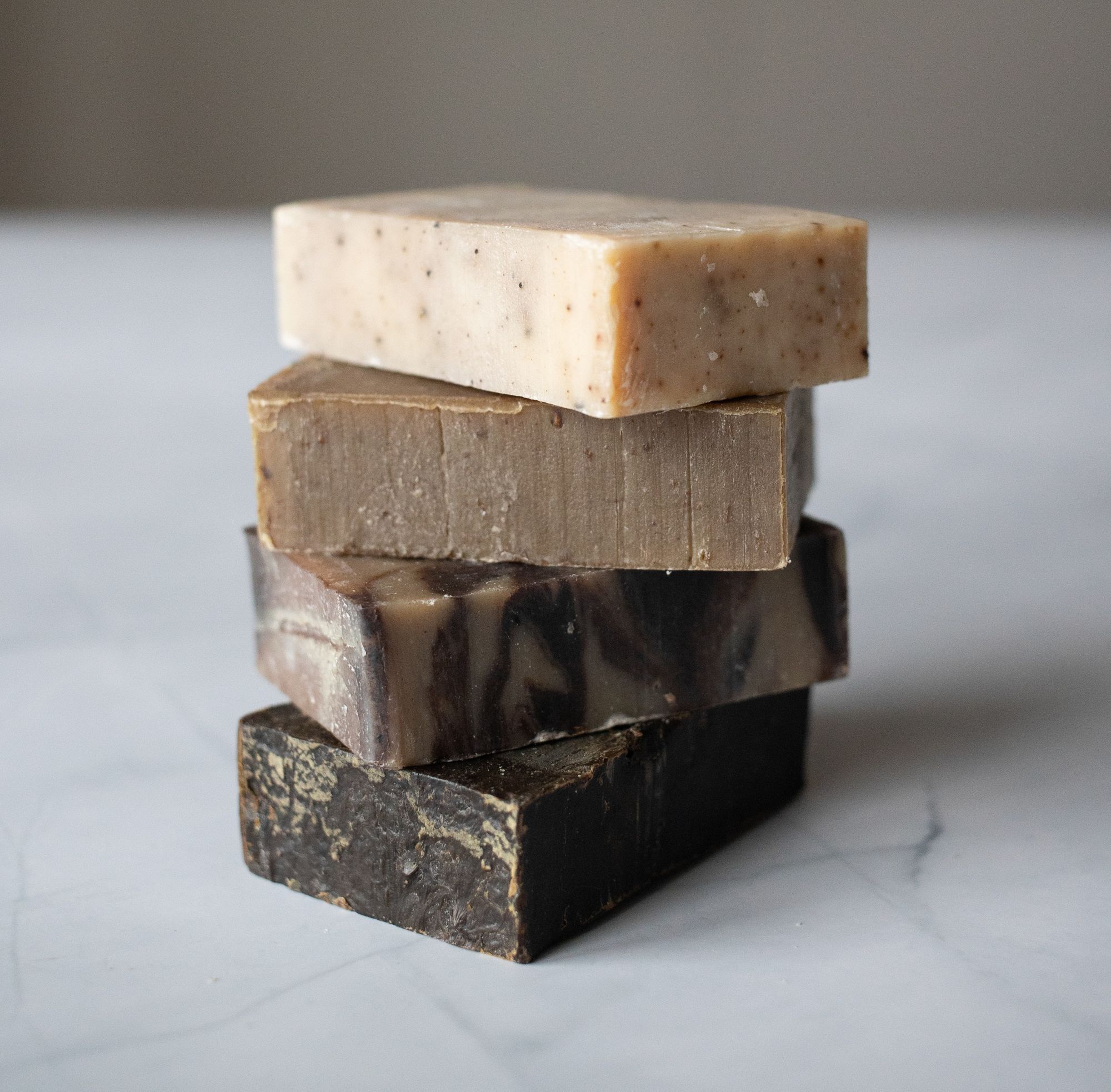We're sure you've seen those beautiful handmade solid soap-looking shampoos and conditioners at farmers’ markets or eco-stores. Yet, you must have wondered, are they really that much different from your regular hair care?
We spoke to Svetlana Lelik, the founder of Solidamie, to get a better understanding of this complex topic. Watch our Solutions Pod episode for more info and read on to find out why solid shampoos and conditioners are the most sustainable option out there!
How much water do bottled shampoos contain?
You will find up to 85% of water inside a bottle of shampoo. Why so much water, right? The answer is simple. It’s so much cheaper to just bulk a bottle with water, but sell it for a ‘beauty product’ price, keeping the profits high. In fact, you are paying for about 15% of actual active ingredients and the unnecessary packaging, of course.
Most of us pick up a large and heavy bottle of shampoo, thinking that it must have a lot of value in it. The heavier and larger the packaging, the more the producer can charge for it, but it’s usually just a part of tricking the consumer.
If you pay for a large bottle of a shampoo or a conditioner, you are most likely deceived into thinking that this bottle has a lot of value in it. Most of the time, solid shampoo bars have a lot more uses in them without excessive amount of packaging.

What about the packaging?
The big issue with cosmetics and daily care products is the packaging. Almost every type of packaging used by the beauty industry comes with consequences. In fact, the industry’s waste issue amounts to 120 billion units of packaging each year!
Plastic, glass, paper (which has a plastic liner to keep the container from absorbing the liquid), aluminum… Many may think that these materials are widely recycled, but countless recycling centers don’t accept beauty products, as it costs a lot to categorize, detach, clean, and sort the components.
Are all solid shampoos and conditioners the same?
No, not all solid shampoos and conditioners are the same, so checking the formulations is key to choosing the right product. Most of those soap-looking products are made by mixing oils with caustic soda, which is effective in acid. It then takes three weeks for the soap to solidify and for soda to evaporate.
This formulation is likely to give you the so-called “squeaky clean” feeling on your skin or hair after a shower or a bath. Some people like that feeling, but it’s not as good as it may sound. In fact, the “squeaky clean” feeling is soap that hard water couldn’t wash away. Think of the soap build-up in your tub or on the shower doors, that is pretty much what’s stuck to your hair or body… Gross, right? Not only that, but you may also get clogged up pores and irritated, itchy, flaky, and dry skin because of the soap left behind on your skin.
Other formulations have no soap. They may use surfactants, in other words, cleansing ingredients made out of the derivatives of various vegetables or natural ingredients. For example, rapeseed oil or coconut oil. Once those ingredients are mixed, there is no need to wait, they may be used immediately after.
Many people claim this formulation makes their hair feel soft and healthy. Solid shampoos and conditioners with no-soap formulation are a perfect travelling companion, as not only you don’t need to worry about the size of your liquid bottles, but you also don’t need to put up with those little hotel shampoos and conditioners that most often make your hair look like a broom. Not to forget, those are also a pretty unsustainable choice.
I keep seeing SLS or SLES on my hair products, what does it mean?
Sodium lauryl sulfate (SLS) or sodium laureth sulfate (SLES) are detergent ingredients that you may find on your shampoo, conditioner, shower gel, and household cleaning bottles.
It is an cheap but effective foaming agent, though is linked to skin irritation. Not all solid shampoos are free from SLS, so check the list of ingredients to understand each product better.
Another big “no” against SLS is the fact that it’s often tested on animals, since the producers need to make sure it won’t cause extreme damage to humans.

Natural hair care tips from Svetlana (Solidamie)
Adopt an aloe vera plant and take a little piece off weekly. Massage aloe vera juice in your scalp to stimulate your hair roots. This routine will promote a healthy blood supply to your scalp, promoting great hair growth, and volume.
Try different oils as a pre-wash mask for the tips only (avoid putting it on your roots, as it might make your hair greasy), looking for the one that works best for you. Many people prefer coconut oil or olive oil, but there are great amounts of options to explore.
You may also wish to use your favorite oil after a hair wash, as a natural serum. In this case use literally one or two drops on the tips only. Moderation is key when you use oils on your hair.


